|
|
英盟展览 | 化境——中国当代艺术邀请展
英盟艺术沙龙2022
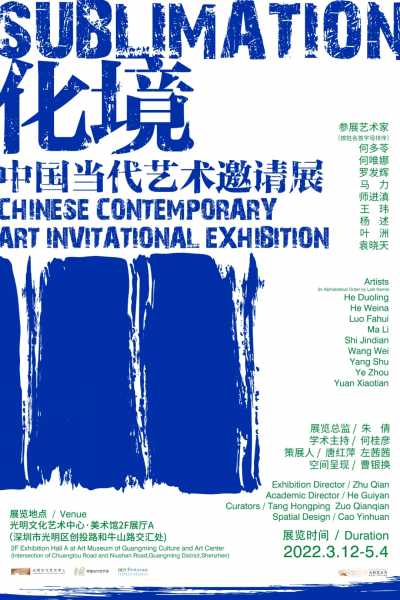
展览时间:2022年3月12日-2022年5月4日
展览地点:光明文化艺术中心美术馆2F展厅A参展艺术家:何多苓、何唯娜、罗发辉、马力、师进滇、王瑋、杨述、叶洲、袁晓天(按姓名首字母排序)
展览总监:朱倩学术主持:何桂彦
策展人:唐红萍、左茜茜
空间呈现:曹银换
主办单位:光明文化艺术中心、英盟当代艺术馆
承办单位:深圳华侨城文体产业管理有限公司
指导单位:深圳市光明区文化广电旅游体育局
前言——心花怒放
文/唐红萍
两年了,我们见够了疫情的灰暗、人世的沉重。每个人,都在梦中呼唤:呼唤绿色的春意,呼唤万物复苏,呼唤生命的觉醒。春的脚步终究无法阻挡,看,三月的小雨,带着春的气息,带着花的芬芳,带着诗意带着韵律,带着我们的期盼,来了!以花为媒,以乐为介,从四川北京,到深圳光明,艺术家们用自己的作品与您倾诉,与您共鸣。绘画、雕塑,写实、抽象,不论形式和呈现有何不同,唯有一愿:游历其间,心花怒放。现在的我们,太需要一次心灵之旅。乱花渐欲迷人眼,浅草才能没马蹄。何老师的杂花婀娜多姿,朦胧诗般委婉述说着爱意;花与草的纠缠,像极了我们的爱情;那飘逸的笔触,是每一次的心动和放飞么?发哥的大花,开满在时代的节点,审视着霓虹灯下的幽暗;欲望的的玫瑰色情也溃败,却掩不住美的寓意和向往。师老师白色的钢琴,浪漫唯美,谁都想弹奏一曲,给敬爱的父母,给可爱的小孩,给心爱的她(他)。抽象的钢丝,蛰伏在具象的琴、自行车上,拉近了观者与艺术的距离。猫儿哥的画面不拘一格,图形、符号和文字随机形成,色彩和媒介丰富,总觉得他抽象的语言有猫的灵性,而非他笑言的乱画。叶洲极简纯净的表达多以时间为序,在他简洁的线条里,是对生命意义的探索,是心灵的自由释放。马力的“音宙”把一个开阔的精神世界带给我们,他较好的音乐感受成全了画面的意境。王玮老师用女性的细腻展现了春天里一幅幅美丽的画卷。女性,是这世界的精灵,美的化身。她们自由浪漫,肆意表现,拥抱美好,多姿多彩的人生不需要铁链和枷锁。娜子的花就是给女性的赠与和奖励,女妖似的她,深谙女人的不易、女人的不屈。她化身女妖,把花冠戴到勇敢者头上,与之共勉。晓天的装置作品以金属丝网为主,火焰、花朵为辅,看似柔软,实则坚硬。作品穿行于场馆,折叠旋转,自由灵动。两年疫情,生活变得脆弱,灼伤的废墟里还剩下了什么?《自由之路》感受历史,更重要的是让我们自问,女性如何寻找和实现自我。愿我们总能在灾难里重获希翼。这一刻,只想给您,真实的美好和无锁舒畅!2022,2,22 于成都牧马山
化境——叙事与修辞的变奏
Sublimation——Variationof Narrativeand Rhetoric
2020年以来,我们会感受到,今天的社会与文化情景正急剧的改变:全球化与反全球化、普世价值与民粹主义、自由主义与新左派、前卫话语与文化保守主义等,而新的文化症候也预示着艺术的转向。特别是在一个“后疫情的时代”,我们对于文化与艺术的发展空间、现实使命、未来走向的思考,也将成为一个无法回避的课题。
事实上,2000年前后,中国当代艺术不管是在语言、叙事、内在的价值尺度方面均出现了转向。当时的情况是,一方面,从1978年以来,中国当代艺术开启了本土化的发展,但到1990年代末,这个线性的发展过程走向了终结。另一方面,伴随着中国在2001进入WTO,置身于全球化的语境,中国当代艺术需要重新定位,构建自身的文化身份与艺术史逻辑。就“叙事”来说,也就意味着,先前那些为当代艺术注入意义的主题、概念因社会与文化情景的改变而逐渐式微。比如1980年代以来的“伤痕”、“生命流”、“大灵魂”,1990年代初的“近距离”、“泼皮”、“都市经验”等逐渐淡出了当代艺术的意义系统。与此同时,“图像转向”“后社会主义经验”“新绘画”“后传统”等概念或新的形态,成为了新的叙事话语。就“修辞”来说,主要体现为艺术家的语言逻辑与形式表达的手段。反映在绘画领域,我们不仅会注意到绘画的意义与观念将处于变化之中,而且,艺术家需要将“修辞”提升到创作方法论的高度。譬如,古典绘画追求“再现”,现代主义绘画强调“个性”与“风格”,后现代绘画则以“图像”表达为基础。因此,对于当代绘画来说,艺术家既要立足于艺术本体,即语言、媒介、形式等范畴进行个人化的探索,也更加重视绘画的观念化表达。
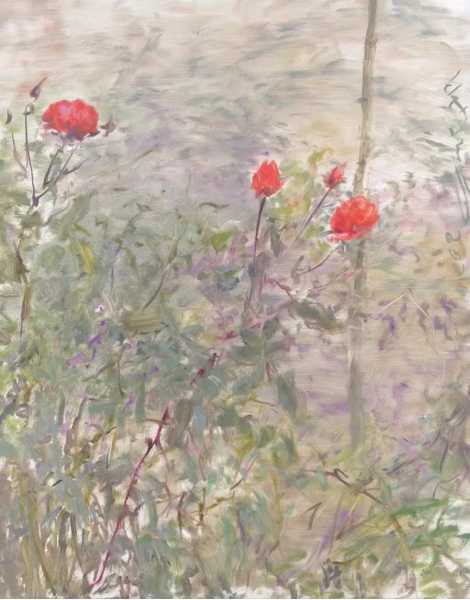
▲何多苓,杂花写生 No.2021-24,布面油画,100×80cm,2021年
He Duoling,Flowers No.2021-24,Oil on Canvas,100x80cm,2021
参加本次展览的艺术家大部分来自四川,虽然他们的作品风格各异,但不管是语言、叙事,还是涉猎的题材,都能从一个侧面反映当代绘画的诸多特点。最近几年,何多苓投身于《杂花系列》的创作中,在何多苓笔下,诗意与中国传统的“意象”是契合的,率性而为与表现性完美结合,而中国士大夫的“逸笔草草”则与作品中的“书写性”水乳交融。可以说,诗性与文学性的回归,特别是对东方审美精神的挖掘是这批作品最大的特点。罗发辉是四川当代绘画领域最早涉及“图像转向”的代表性艺术家,他的作品不仅有鲜明的个人风格,并借助图像的叙事和符号的隐喻表达作品的人文与生命意识。
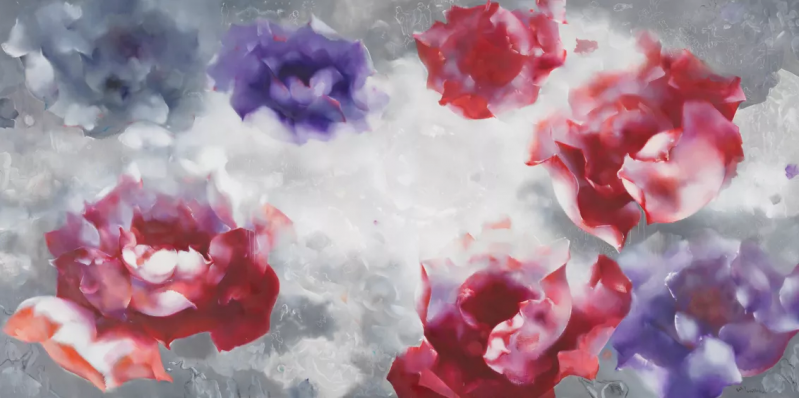
▲罗发辉,漂浮的花朵,布面油画,400×200cm,2017年Luo Fahui,Floating Flowers,Oil on Canvas,400x200cm,2017
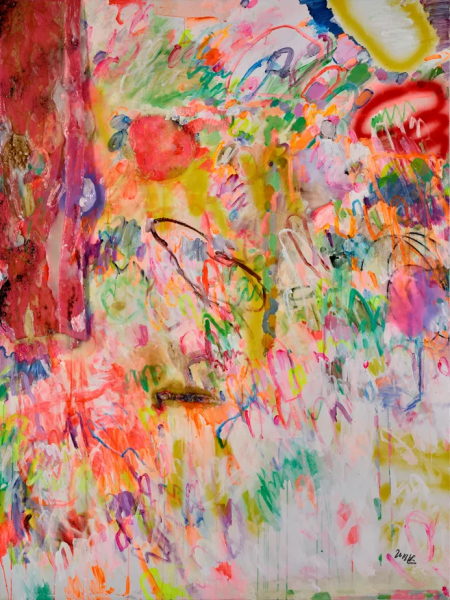
杨述 ,2018 17号,布面丙烯,200×150cm,2018Yang Shu,2018 No.17,Acrylic on Canvas,200x150cm,2018
从1980年代中期以来,杨述的作品始终没有离开抽象与表现这两个语言体系。一方面在“抽象”之中,杨述融入了书写、涂鸦、身体性的因素;另一方面,倚重表现性的语言,但不限囿于现代主义的范畴,而是将拼贴、现成品等手法结合起来,使作品的语言与观念表达富有当代文化的特征。在形式与修辞方面,叶洲的作品保留着“硬边抽象”或结构抽象的视觉特征,不过,艺术家真正追求的是,这些理性的、克制的线条背后蕴含的时间和过程性。马力的绘画同样具有抽象表现主义的特点,但艺术家对形式运作中的偶发性、自动性的重视,以及对媒介物性的把握,使作品的视觉呈现更有感染力。何唯娜、王瑋的作品不仅有当代水墨的特点,并强调从日常出发、从微观现实出发,另一个共同点是隐含着女性艺术家独特的观看视角与情感表达。除了绘画之外,师进滇的作品兼具雕塑与装置的形态。通过形式与语言的转换,艺术家将日常的物品予以语言的编码,使其产生一种疏离的、陌生化的特点。对场域、对空间的改变,使得观众会重新审视那些日常之物原有的面貌与功能。利用编制、火烧、综合的工艺手段,袁晓天希望自己的作品不仅能彰显出一种幻化、不屈的生命力,同时,借助材料、空间、光线等因素,让作品在视觉心理上,唤起一种东方化的审美经验。
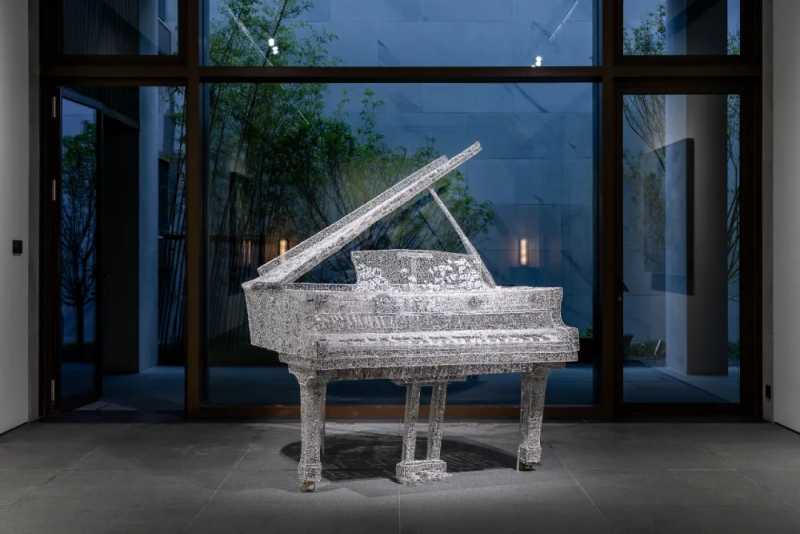
▲师进滇,钢琴,不锈钢丝、木炭,150×148×175cm,2021年
Shi Jindian,Piano,Stainless Steel Wire、Charcoal,150x148x175cm,2021
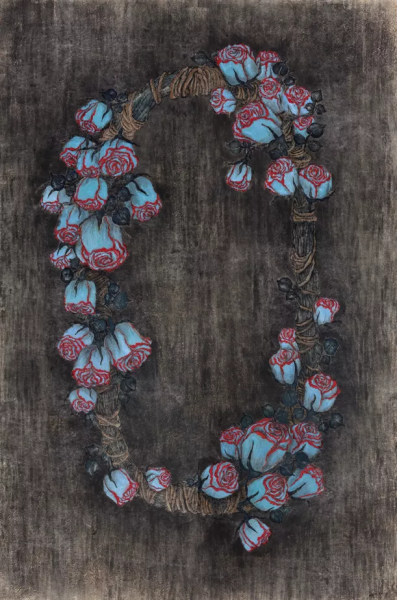
▲何唯娜,环之二,纸本水墨,300×200cm,2021
He Weina,Ring Two,Ink on Paper,300x200cm,2021当然,倘若我们将这个展览,或者说艺术家们的创作放入中国当代艺术的情景中,我们既可以看到,艺术家们是如何面对今天的文化现实与周遭的生命体验,也可以看到,他们立足于当代艺术的话语体系与视觉经验,如何形成个人的语言表达与创作方法。更宏观的讲,“叙事”与“修辞”将成为我们了解、观察、研究中国当代艺术发展与衍生的重要通道。不过,“叙事”更侧重于题材、内容,也强调叙事过程中的方法,本质上讲,也更贴近社会学的范畴。而“修辞”则源于艺术本体,是在语言、形式、媒介、审美等层面体现艺术品的价值。事实上,它们刚好形成了中国当代艺术的两种价值尺度——社会学前卫与美学前卫。然而,对于中国当代艺术的发展,我们会注意到,“社会学前卫”与“美学前卫”始终处于一种博弈、砥砺,而不是融合与平衡的状态。它们交替向前,在不同的阶段各领风骚。因此,“变奏”正是其发展的一个主要特征。用“化境”作为本次展览的主题,因为对于艺术家来说,不管是借助语言、题材、修辞等手段,最终还是要为作品构建一个阐述语境和人文境界。
何桂彦
2022年2月16日于四川美院虎溪校区
学术主持
ACADEMIC DIRECTOR
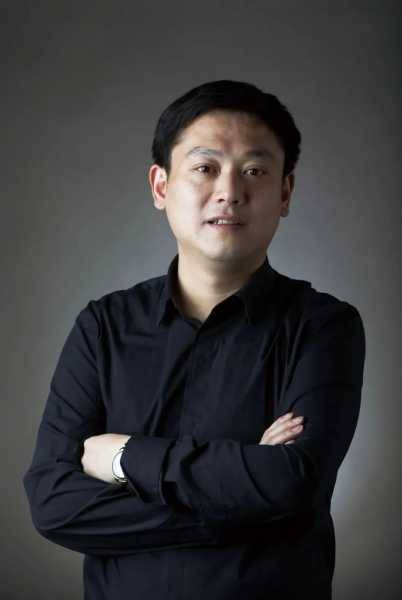
何桂彦,中央美术学院美术学博士,批评家,策展人,现为四川美院艺术人文学院教授,四川美院美术馆馆长,四川美院当代艺术研究所所长,硕士研究生导师,中国批评家年会学术委员,中国策展委员会委员,中国美术家协会会员,中国雕塑学会理事,重庆雕塑学会副会长。
研究领域有欧美现当代艺术、艺术批评与展览策划、中国当代艺术思潮等。曾在国内学术期刊《文艺研究》、《美术研究》、《艺术当代》等发表批评文章70余篇,共50万字。2008年以来,先后出版个人著作与编著13本,如《走向后抽象》(河北美术出版社、2008年) 、《形式主义批评的终结》(文化艺术出版社、2009年)、《建构之维:当代艺术家个案》(副主编、中国青年出版社、2010年)、《清晰的地平线——1978年以来的中国当代雕塑》(河北美术出版社,2011年)、《社会风景:中国当代绘画中的风景叙事》(河北美术出版社,2014年)、《前卫的没落》(上海人民美术出版社,2015年)、《社会剧场:参与与共享》(副主编、重庆美术出版社、2017年)等。曾策划数十个当代艺术展。
SUBLIMATION
VARIATIONOFNARRATIVEANDRHETORIC
Since 2020, we have witnessed the dramatic changes in social and cultural circumstances: globalization and anti-globalization, universal value and populism, liberalism and new left, avant-garde discourse andcultural conservatism. New cultural symptoms have also indicated the change direction of art. Particularly, in the “post-pandemic era”, it has been an unavoidable subject for us to consider the development space, current mission and future direction of culture and art.In fact, around 2000, Chinese contemporary art has changed its direction in discourse, narrative and intrinsic value. On the one hand, Chinese contemporary art launched its localized development since 1978, but this linear development stopped in the end of 1990s. On the other hand, as China joined the WTO in 2001 and putitself into the globalization context, Chinese contemporary art should fix its position again and constructits cultural identity and artistic logic. In terms of “narrative”, it means that the subjects and concepts that endowed contemporary art with meanings before are gradually losing their influences due to the changes of social and cultural circumstances. For example, the “trauma, “life stream” and “great soul” since the 1980s as well as the “close range”, “hooligan” and “urban experience” in the beginning of the 1990s have faded from the meaning system of contemporaryart. Meanwhile, “image turn”, “post socialist experience”, “new painting”, “post tradition” and other new concepts and forms have formed new narratives. In terms of “rhetoric”, it is mainly reflected through the language logic and formal representation of artists. Speaking of the painting field, we have noticed that the meaning and concept of painting are changing, and artists also need to adopt “rhetoric” as a creation method. For example, classical painting pursues “reappearance”, modernist painting stresses “personality” and “style”, while the post modern painting is based on “image” representation. Therefore, for contemporary painting, artists should start from the art itself, including language, media and form, to conduct personal exploration, and pay more attention to the expression of the painting’s idea.
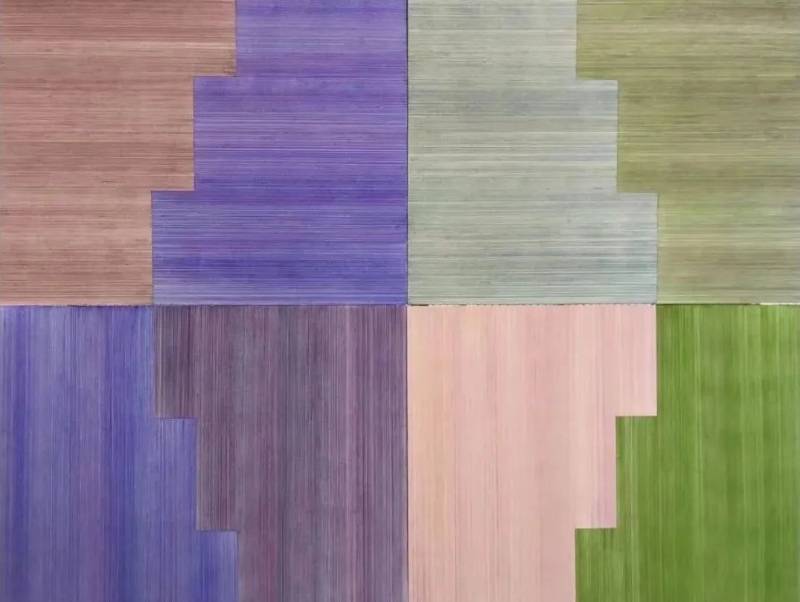
▲叶洲,TIME20180729,亚麻布丙烯,160×200cm,2018
Ye Zhou,TIME20180729,Acrylic on Linen,160x200cm,2018
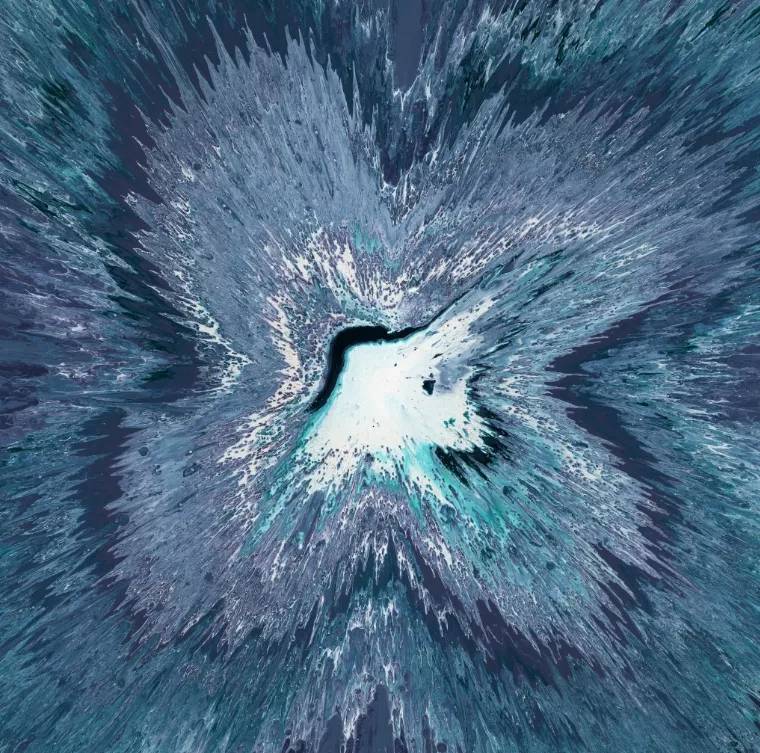
▲马力,宇宙 23,布面亚克力,150×150cm,2020年
Ma Li,Universe Twenty-Three,Acrylic on Canvas,150x150cm,2020
The artists of this exhibition are mostly from Sichuan Province in southeastern China. Although they present different styles in their creation, they can reflect some characteristics of contemporary painting from discourse, narrative and theme. In recent years, He Duoling has devoted himself into the creation ofFlower Series. Under the brushes of He Duoling, poetic flavor is line with the traditional Chinese “image”, combing willfulness with representation. The seemingly casual paintings of Chinese artist is integrated with the realistic painting. It is fair to say that these works of art are featured by the return to poetry and literary, especially the exploration of oriental aesthetics spirit. Luo Fahui is a representative artist who involved in “image turn” first in the field of contemporary painting in Sichuan. His paintings not only reflect his personal style, but also express the consciousness of humanity and life through image narrative and symbol metaphor. Since the middle of 1980s, the works of Yang Shu have centered on abstraction and manifestation. On the one hand, Yang Shu has integrated the elements of writing, scrawl and physical feature with “abstraction”. On the other hand, instead of being confined into modernism, Yang Shu focuses on expressive language and adopts techniques such as tile and ready-made article, to endow the language and idea of works with the features of contemporary cultue.In terms of form and rhetoric, the works ofYe Zhou still keep the visual feature of “hard-edgeabstraction” and structural abstraction. However, what the artist really pursues is the time and process contained in the rational and restrained lines. The paintings of Ma Li also reflect the features of abstract expressionism. The attention paid by the artist to the accidental and automatic form operation as well as his control of media can deliver more infectious works. The works of He Weina and Wang Wei have the features of contemporary ink paintings. Starting from daily life and micro reality, they contain the unique perspective and emotion of female artists. In addition to paintings, the works of Shi Jindian involve both sculptures and installations. Through the transformation of form and language, the artist has endowed daily objects with linguistic codes, to create alienated and unfamiliar features. The changes of field and space will encourage audiences to reexamine the original appearance and function of daily objects. Through comprehensive technical means such as knitting and burning, Yuan Xiaotian hopes that her works can reflect a fantastic and unyielding vitality. Meanwhile, through factors such as materials, space and light, she wants to evoke the oriental aesthetic experience in visual psychology.
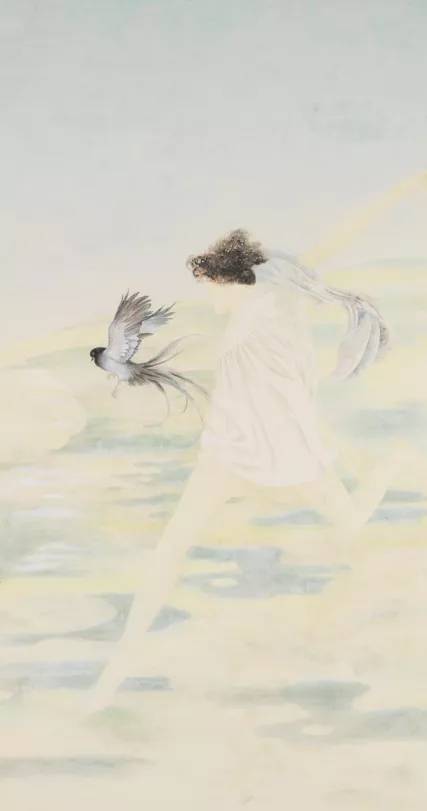
▲王瑋,飞鸟,纸本设色,176×93.6cm,2017年
Wang Wei,Flyer,Ink and Color on Paper,176×93.6cm,2017
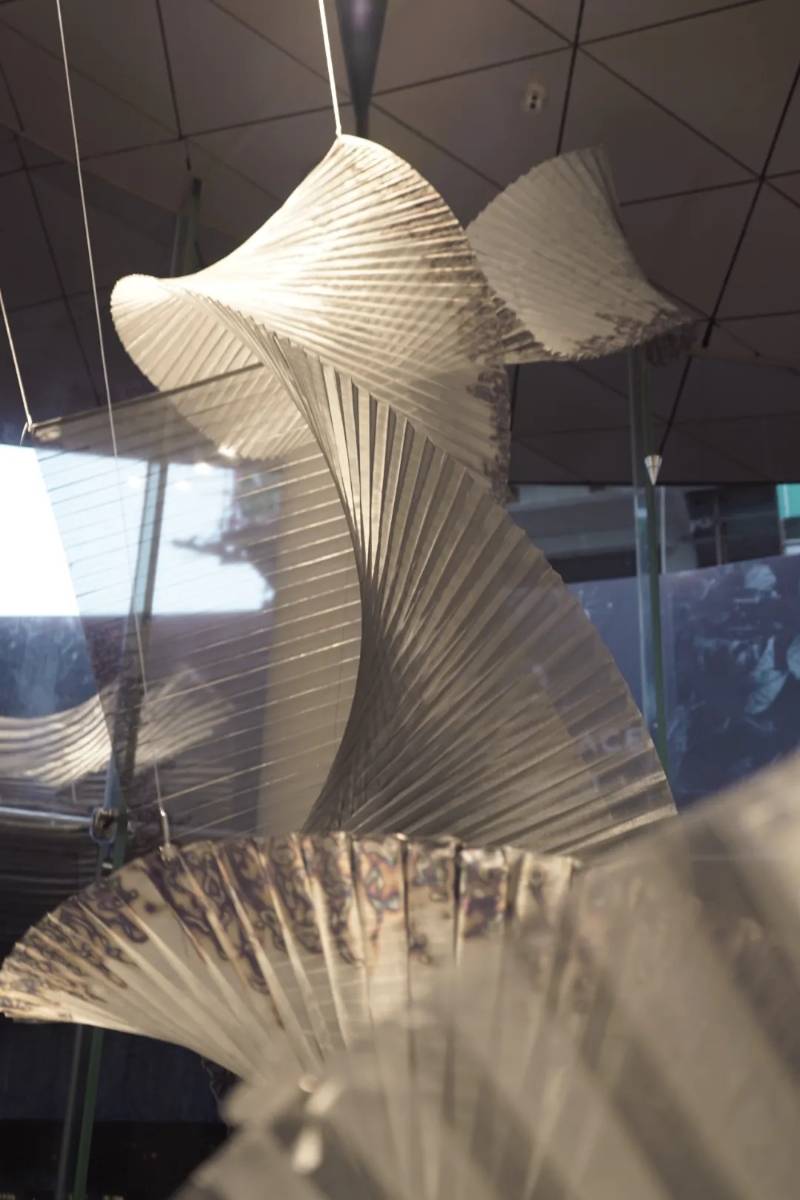
▲袁晓天,Flow,不锈钢丝网,尺寸可变,2021年
Yuan Xiaotian,Flow,Stainless Steel Wire,Variable Size ,2021
Of course, if we consider this exhibition and the creation of artists in the context of Chinese contemporary art, we can not only witness how the artists confront today’s cultural reality and life experience, but also see how they form personal discourse expression and creation method based on the discourse system and visual experience of contemporary art. Macroscopically speaking, “narrative” and “rhetoric” will serve as important channels for us to understand, observe and study the development of Chinese contemporary art. “Narrative” pays more attention to theme, content and the method adopted in narrative. In essence, it is more close to sociology. “Rhetoric” is originated from the art itself, expressing the values of artwork from language, form, media, appreciation and other aspects. In fact, they have formed the two measure values of Chinese contemporary art, namely the sociological avant-garde and aesthetic avant-garde. However, for the development of Chinese contemporary art, we will notice that sociological avant-garde and aesthetic avant-garde are always struggling with each other, rather than being integrated and balanced. They lead the trend in turns at different stages. As a result, “variation” is one of the major features. We have chosen “Sublimation” as the subject of this exhibition, because for the artists, they need to construct a discourse context and cultural realm for their works, no matter through language, theme or rhetoric.
He GuiyanHuxi Campus of Sichuan Fine Arts InstituteFebruary 16, 2022
关于我们
英盟艺术机构HEROALL ART INSTITUTIONS
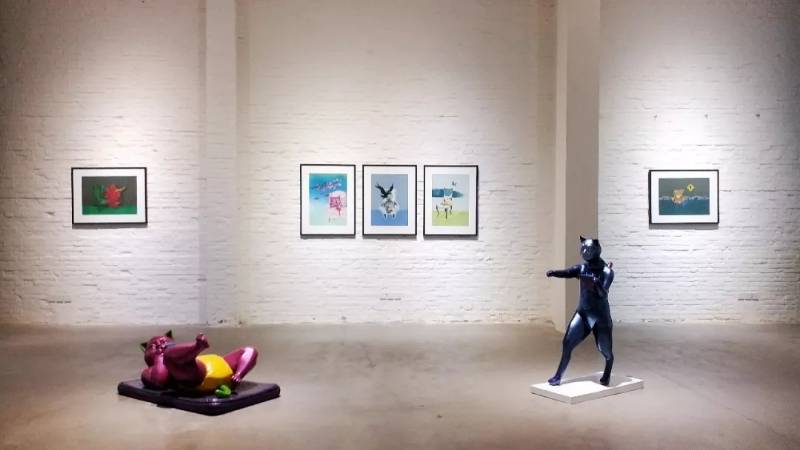
英盟文化于2010年在成都成立,是一家专门从事艺术品市场推广及学术推广的专业机构。旨在培育艺术市场,培养艺术爱好者、鉴赏家及收藏家,发现和扶助优秀艺术家。“让美伴随每个人,让人类优秀文化代代相传”是我们的追求,我们倡导消费性收藏,力图让艺术品进入千家万户。艺术馆融合雕塑,油画,版画,水彩等艺术品,每年举办约8个不同规模的展览。通过多年的努力,成功推出具有学术影响力的展览《素问》、《后来》。在坚持学术性的同时,我们通过跨界合作,以沙龙活动、艺术讲座、品鉴会等形式传播和普及艺术知识来延伸展览的边界,带领更多的人关注艺术、亲近艺术。英盟当代机构正在以多元化的发展态势,打造一个集品牌艺术展览策划推广、艺术品及版权代理、学术论坛、艺术跨界合作、品牌艺术顾问、青年艺术家扶持与推广为一体的专业的艺术展示、交流、服务平台。
|
|
 |手机版|小黑屋|Archiver|东方旅游文化网
( 苏ICP备10083277号|
|手机版|小黑屋|Archiver|东方旅游文化网
( 苏ICP备10083277号|![]() 苏公网安备 32080302000142号 )
苏公网安备 32080302000142号 )